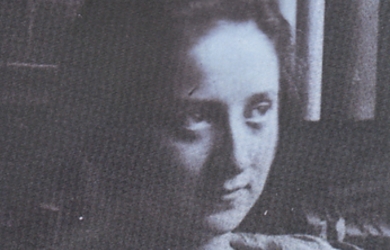 Friedl Dicker was a gifted painter. She found her artistic calling at the Bauhaus School of Usable Art in Weimar, Germany, where she learned the techniques that would go on to shape the way she designed public buildings, theatre sets, and textiles. While there, she began to teach art to children and preschool teachers, which highlighted her talent in the field of education.
Friedl Dicker was a gifted painter. She found her artistic calling at the Bauhaus School of Usable Art in Weimar, Germany, where she learned the techniques that would go on to shape the way she designed public buildings, theatre sets, and textiles. While there, she began to teach art to children and preschool teachers, which highlighted her talent in the field of education.
In December 1942, she and her husband Pavel Brandeis were sent to Theresienstadt, where Dicker lived in a Girls’ Home. There, she contributed greatly to the education of the girls she lived with, as well as other children living in the ghetto. She aimed to ease the emotional hardship faced by children in the camp. In her art classes, she encouraged free expression, imagination, and cooperation, all of which were undermined by life in the ghetto. In October 1944, just days after her husband was sent to Auschwitz, Dicker volunteered to join thirty of her students on a train to the concentration camp.
After liberation, one of Dicker’s students found two suitcases containing 5,000 drawings of children, which Dicker had hidden before leaving Theresienstadt. Dicker believed strongly in the power of imagination and fantasy, and wished the preserve the experiences of children as best she could during the Holocaust.